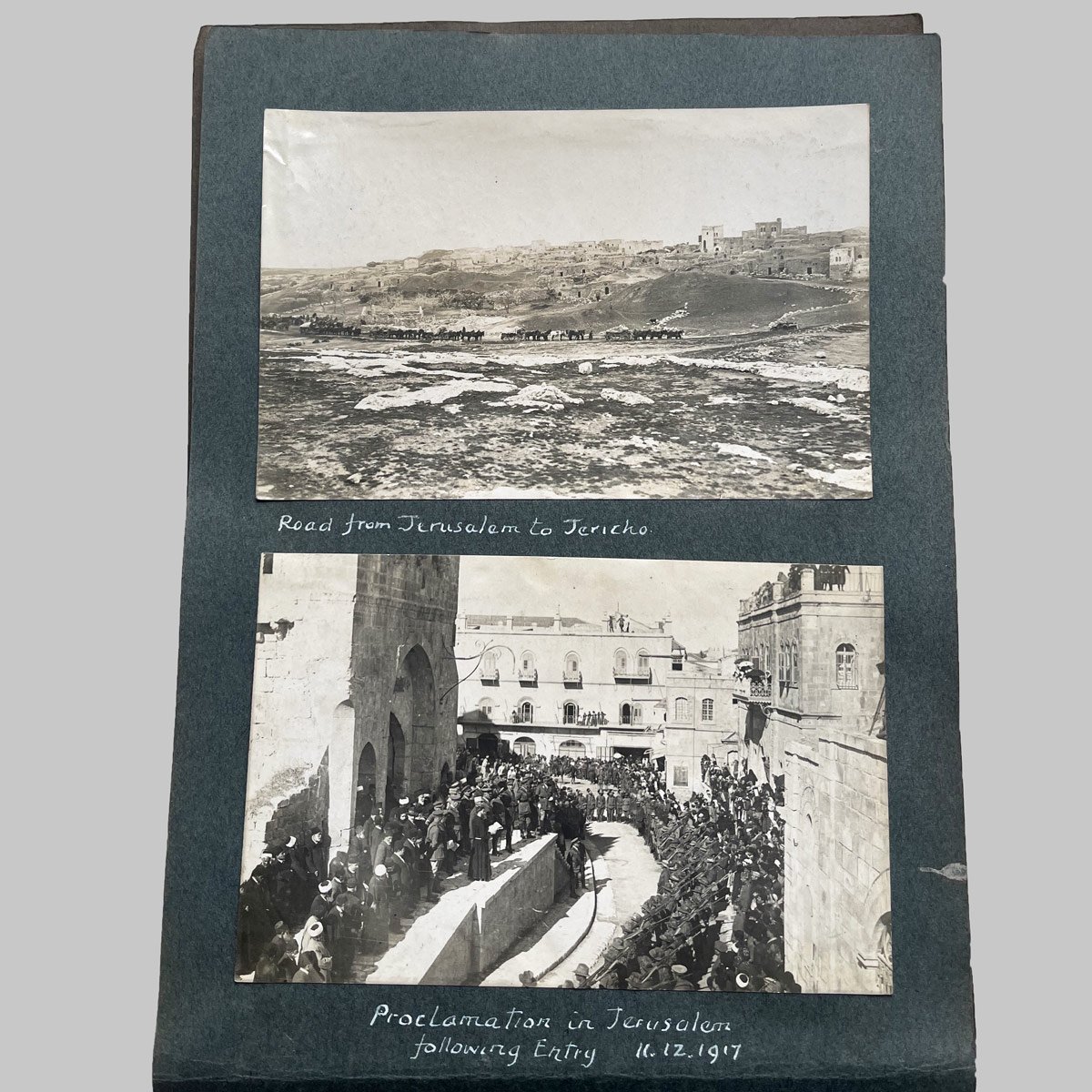 Image 1 of 15
Image 1 of 15

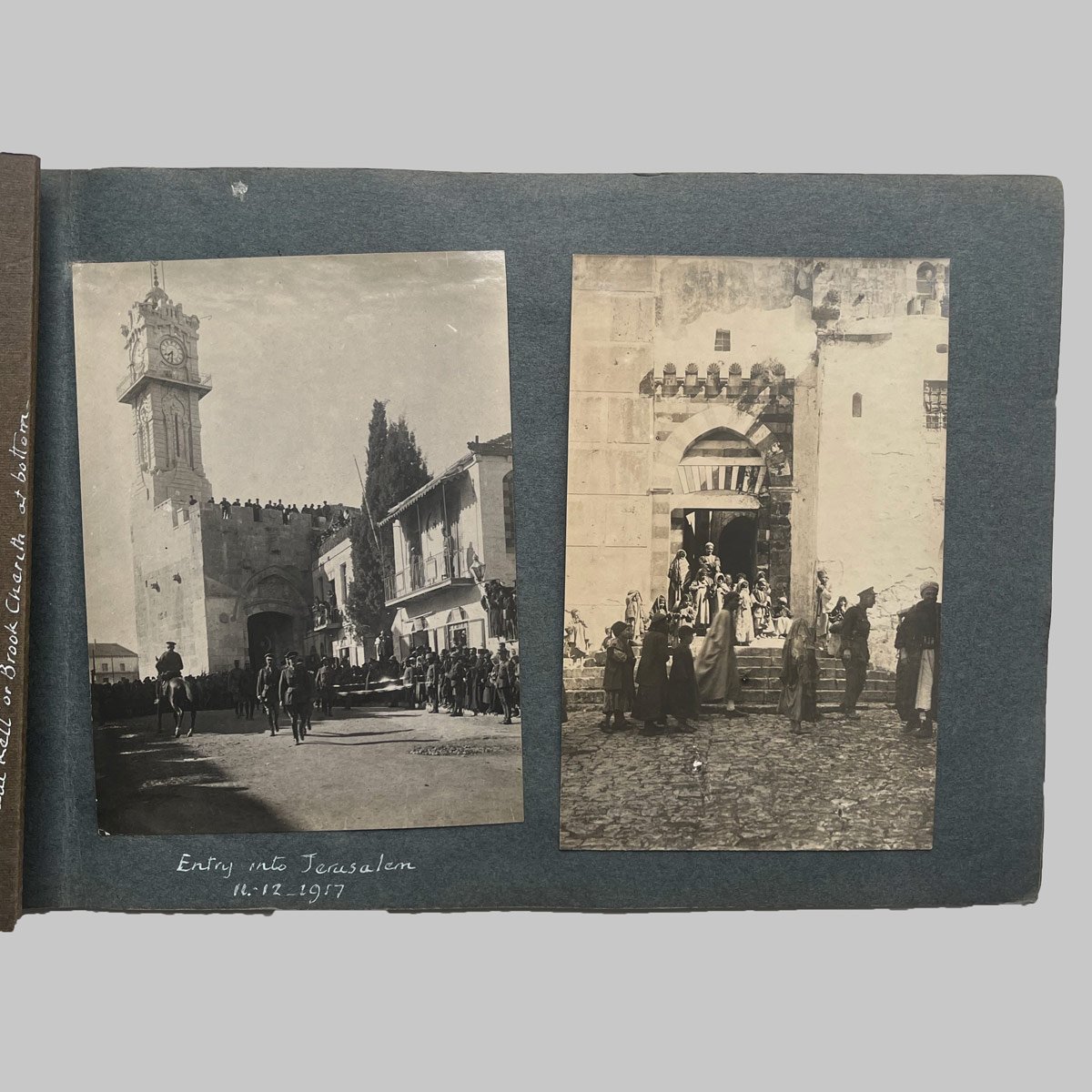 Image 2 of 15
Image 2 of 15

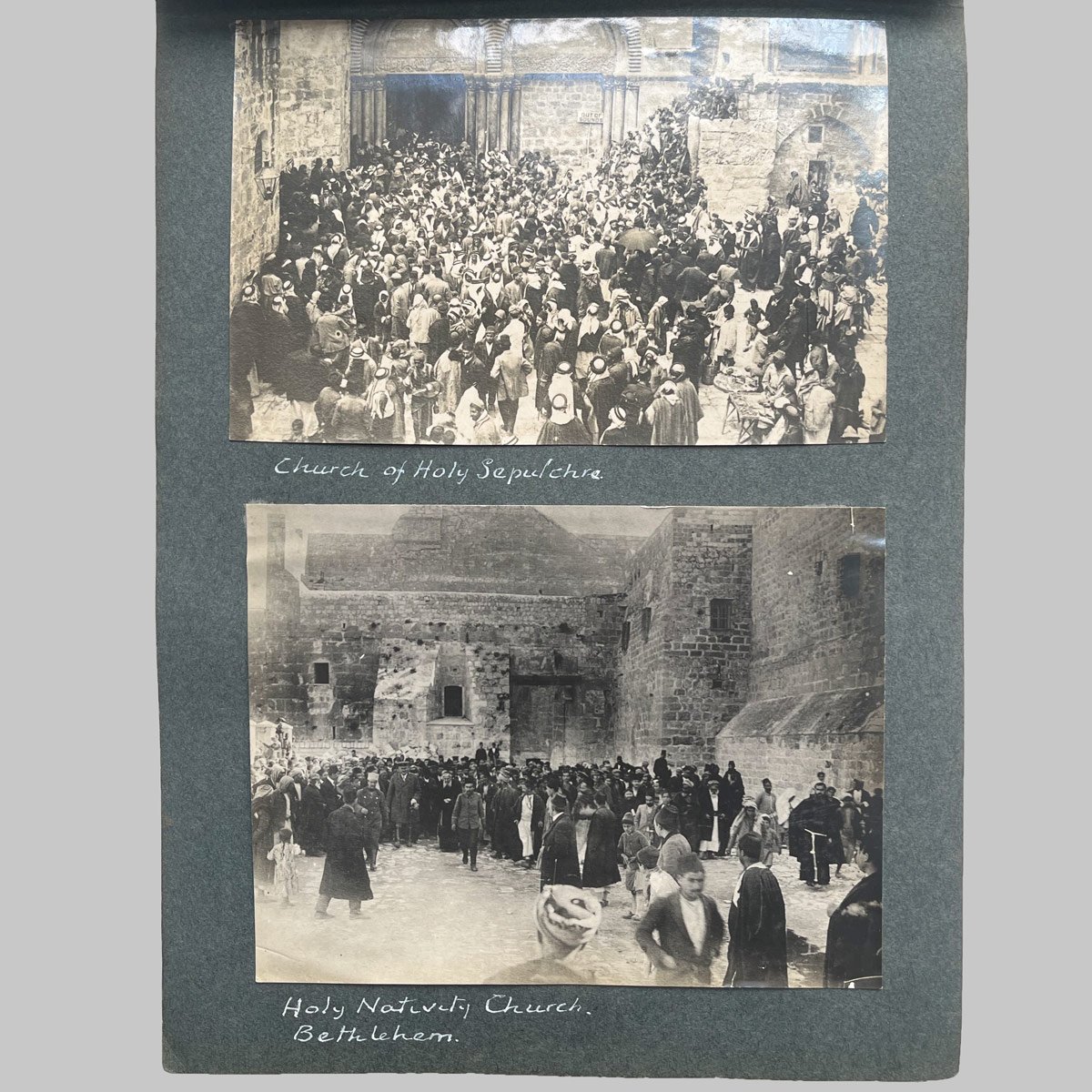 Image 3 of 15
Image 3 of 15

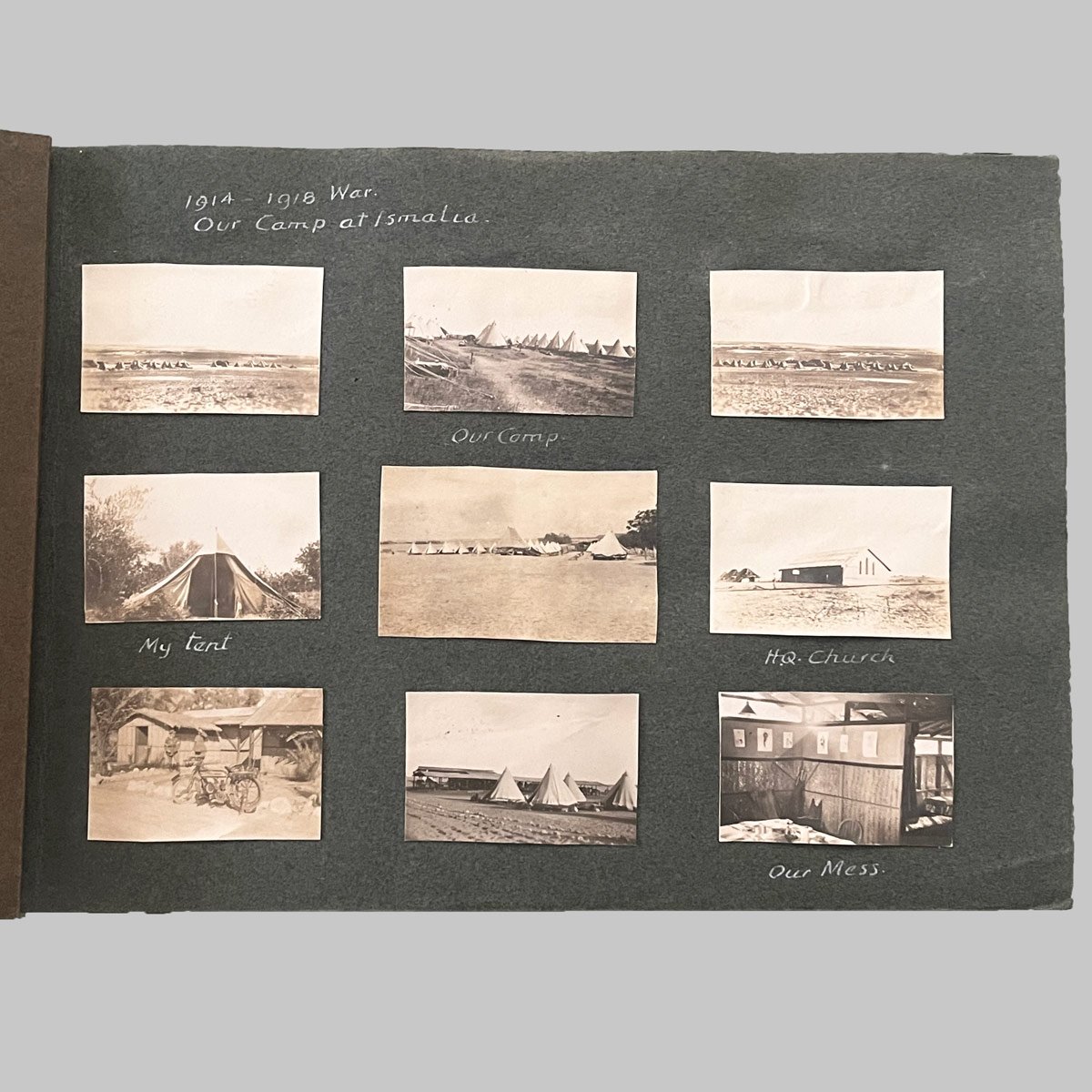 Image 4 of 15
Image 4 of 15

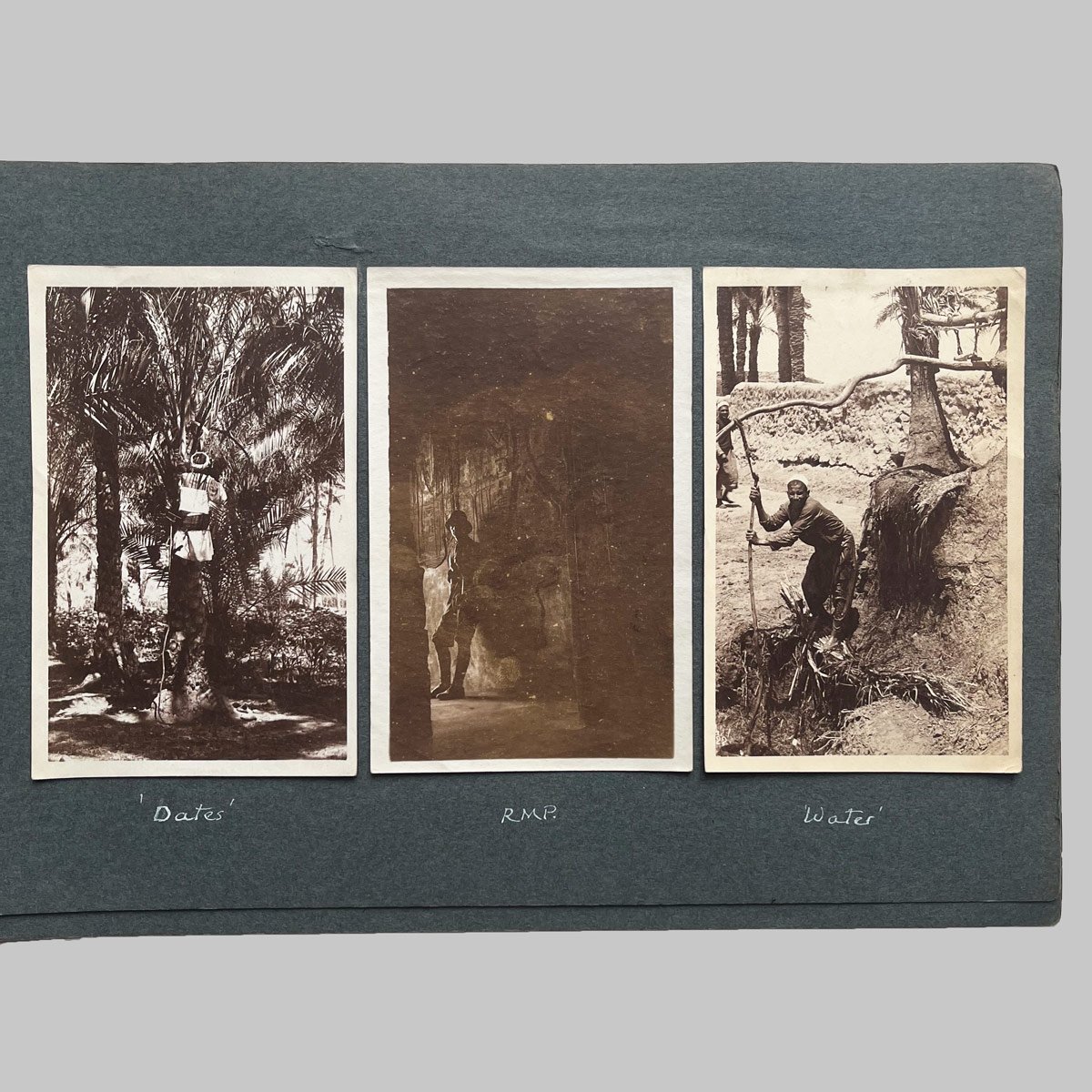 Image 5 of 15
Image 5 of 15

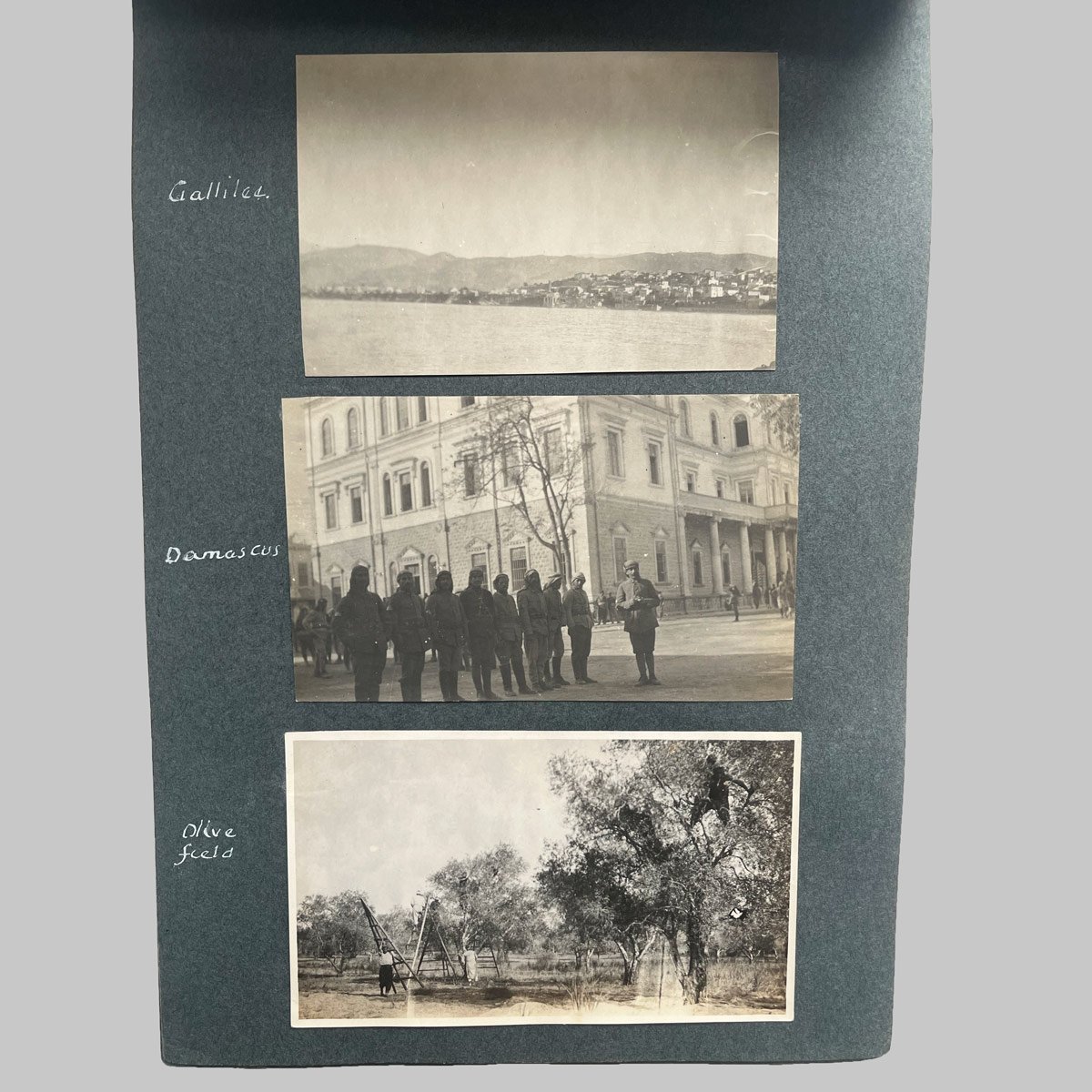 Image 6 of 15
Image 6 of 15

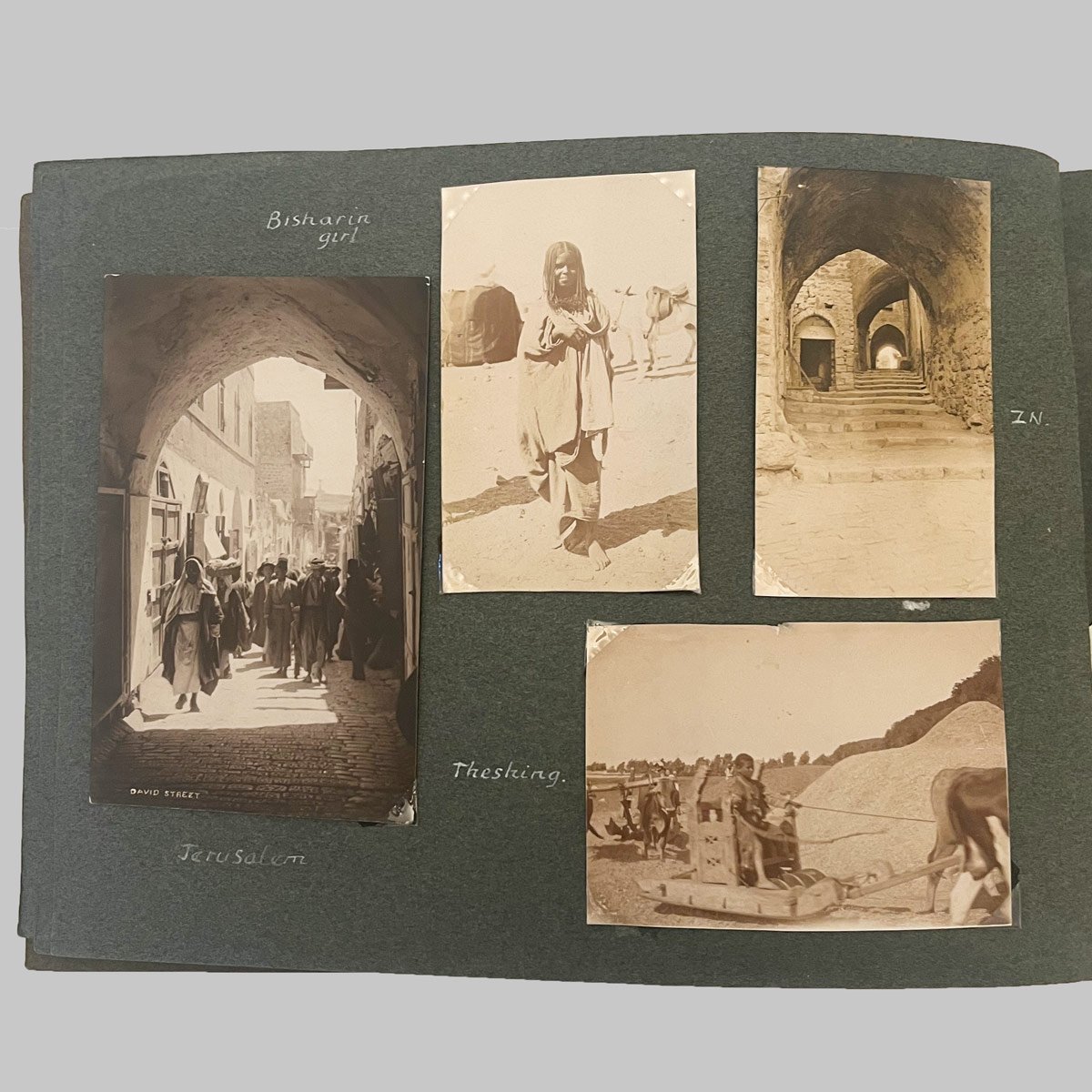 Image 7 of 15
Image 7 of 15

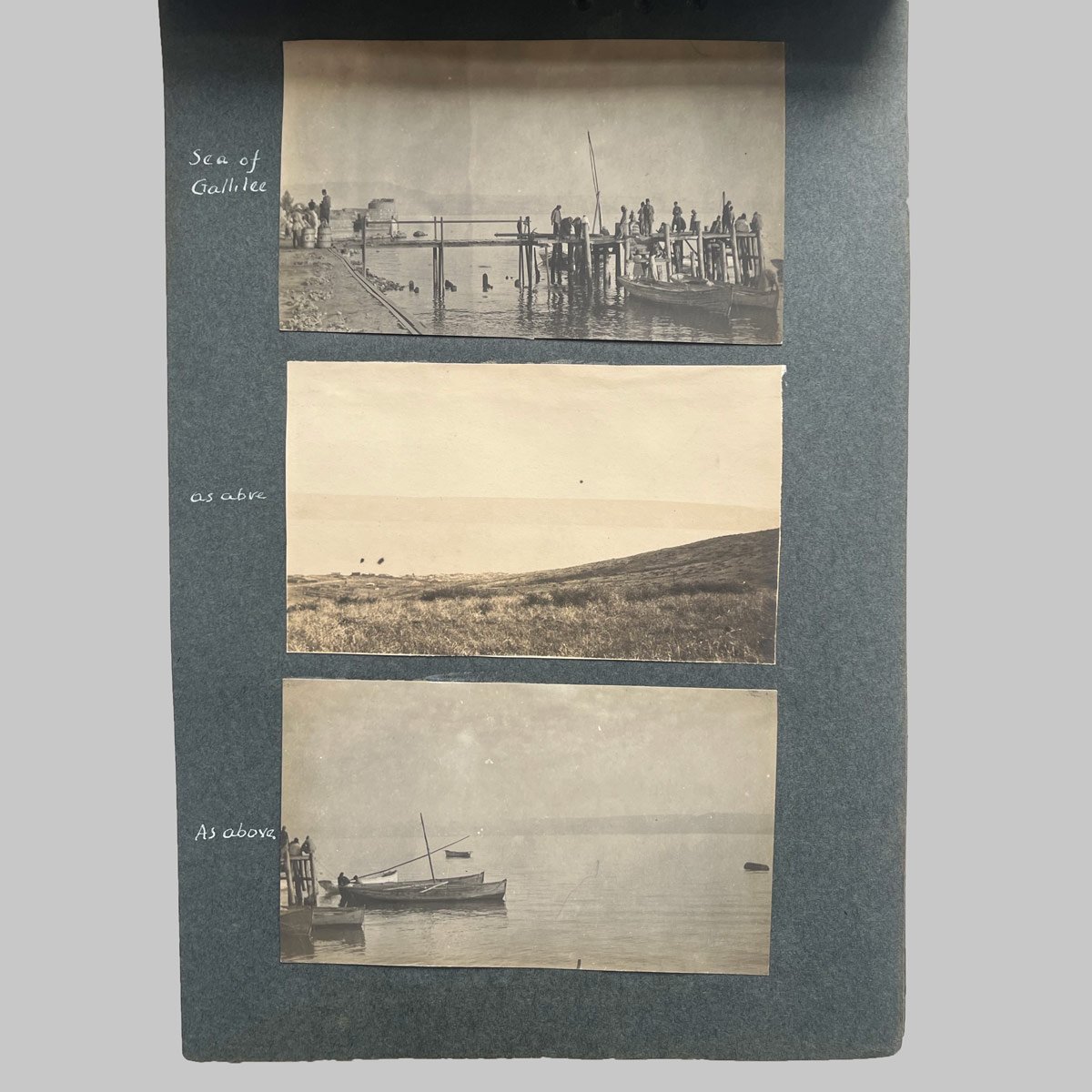 Image 8 of 15
Image 8 of 15

 Image 9 of 15
Image 9 of 15

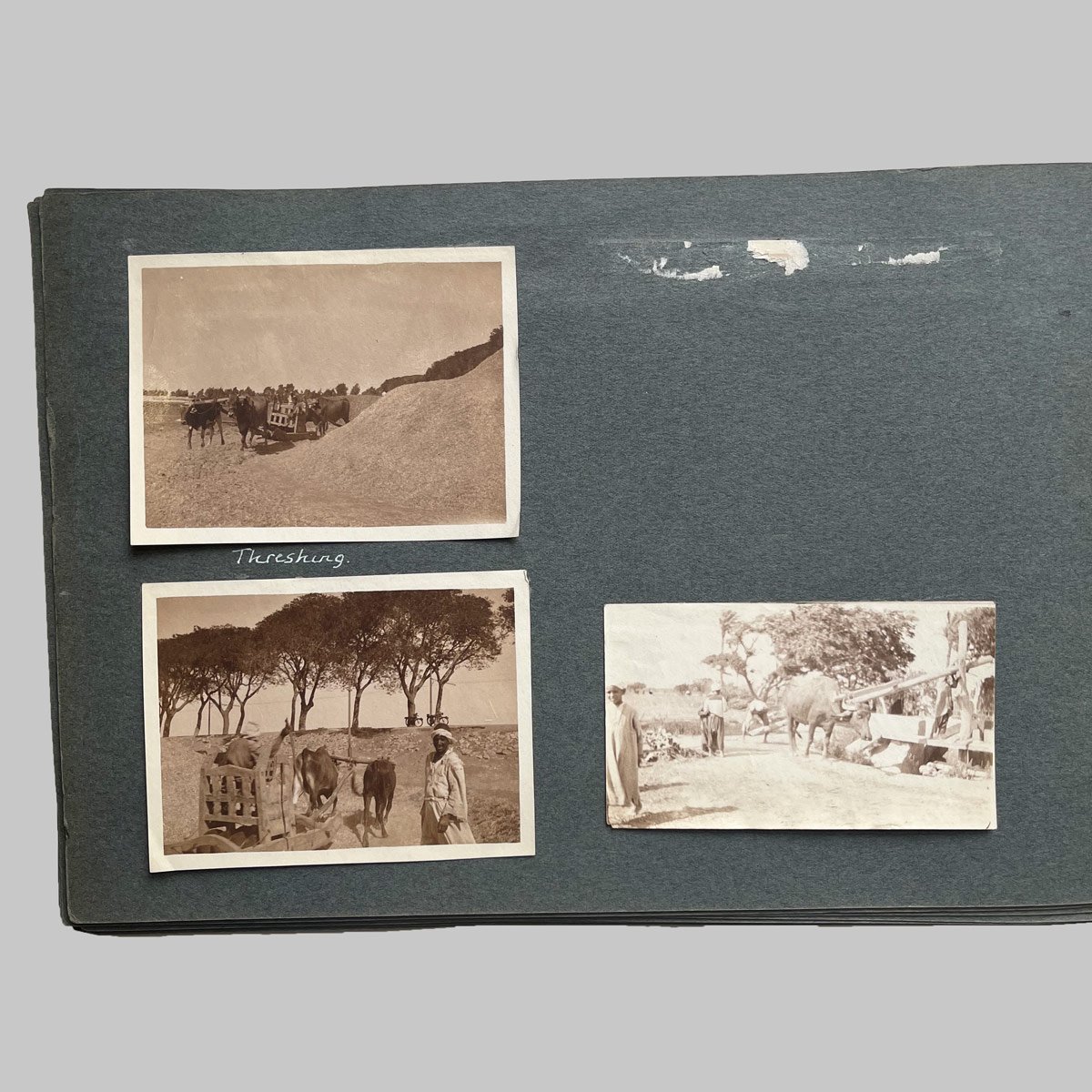 Image 10 of 15
Image 10 of 15

 Image 11 of 15
Image 11 of 15

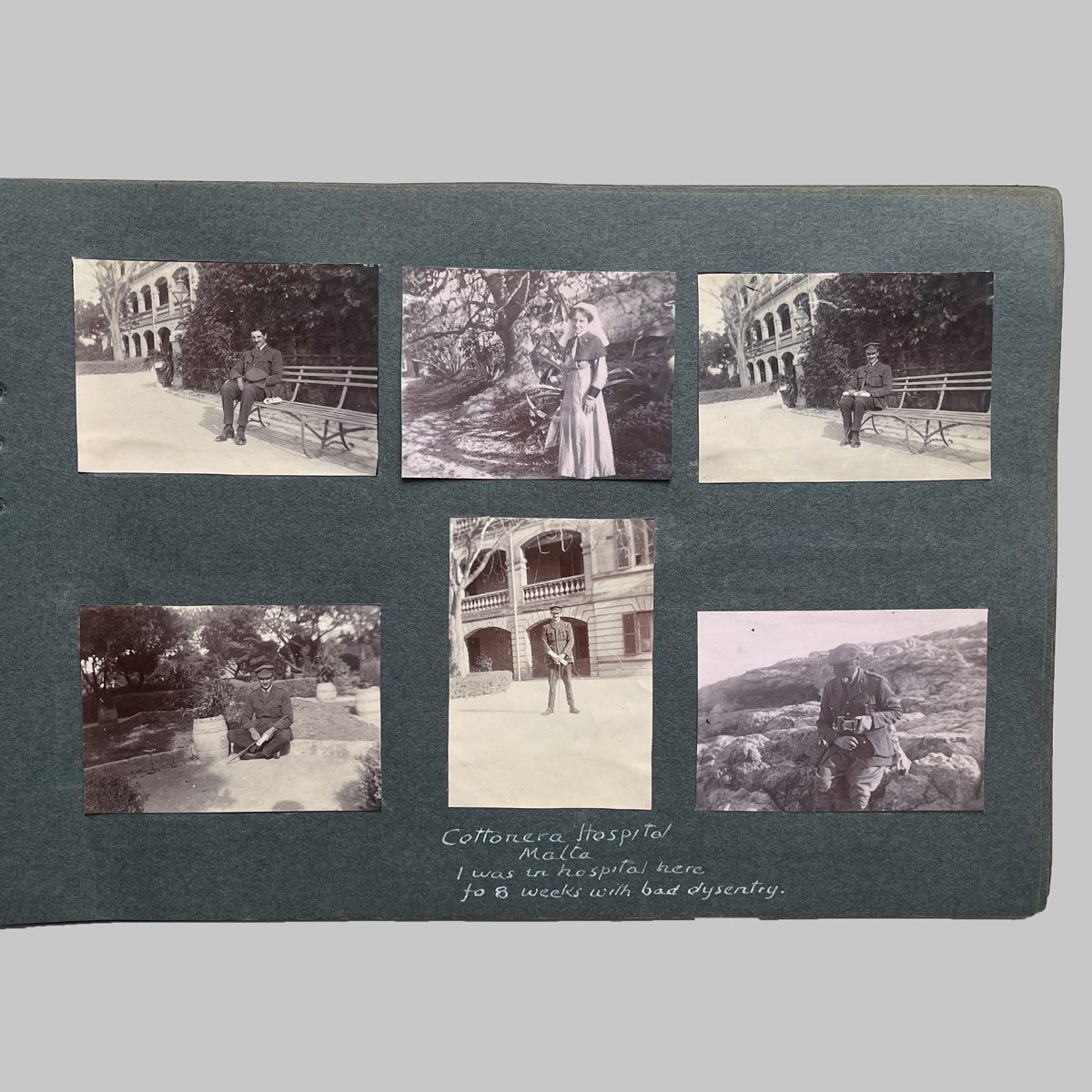 Image 12 of 15
Image 12 of 15

 Image 13 of 15
Image 13 of 15

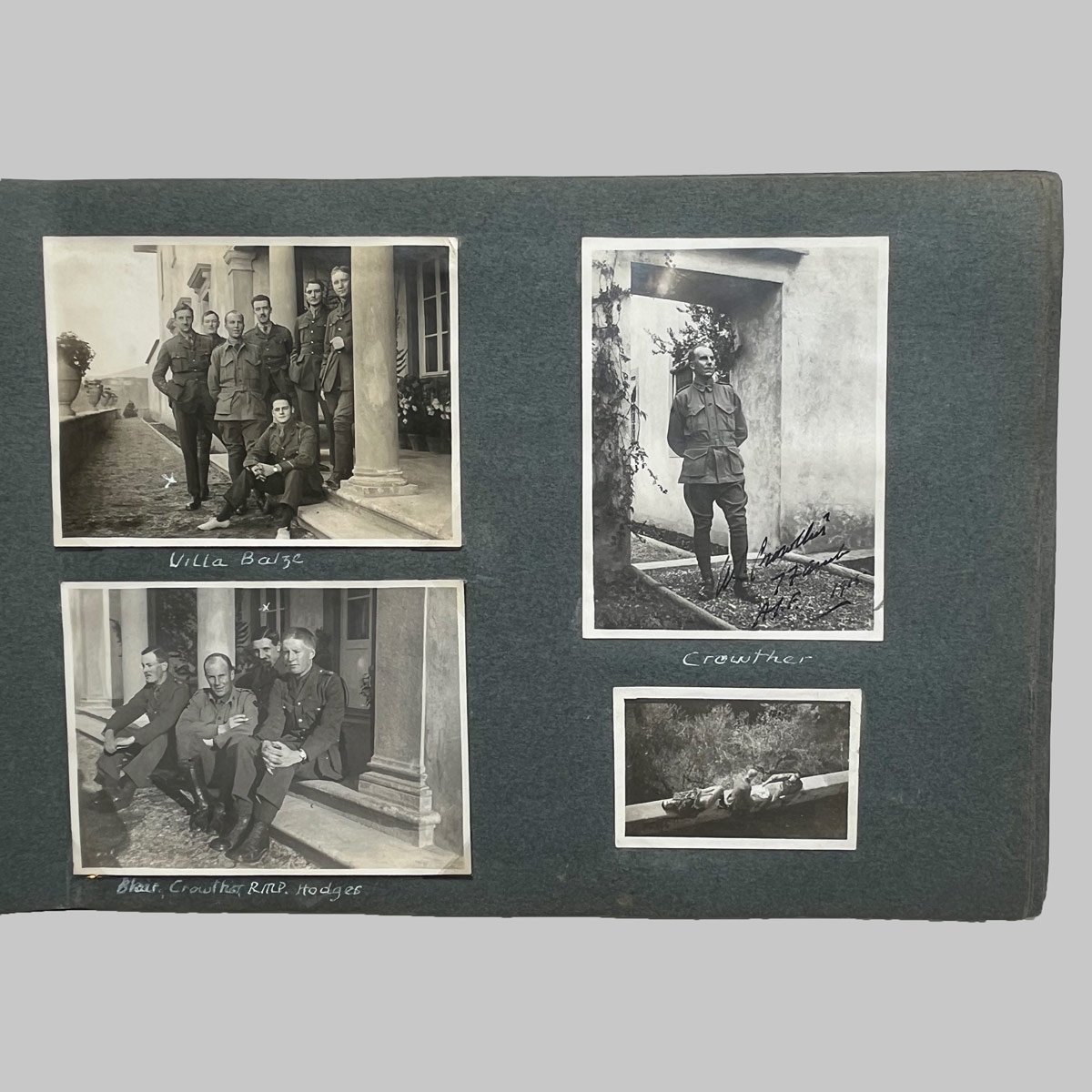 Image 14 of 15
Image 14 of 15

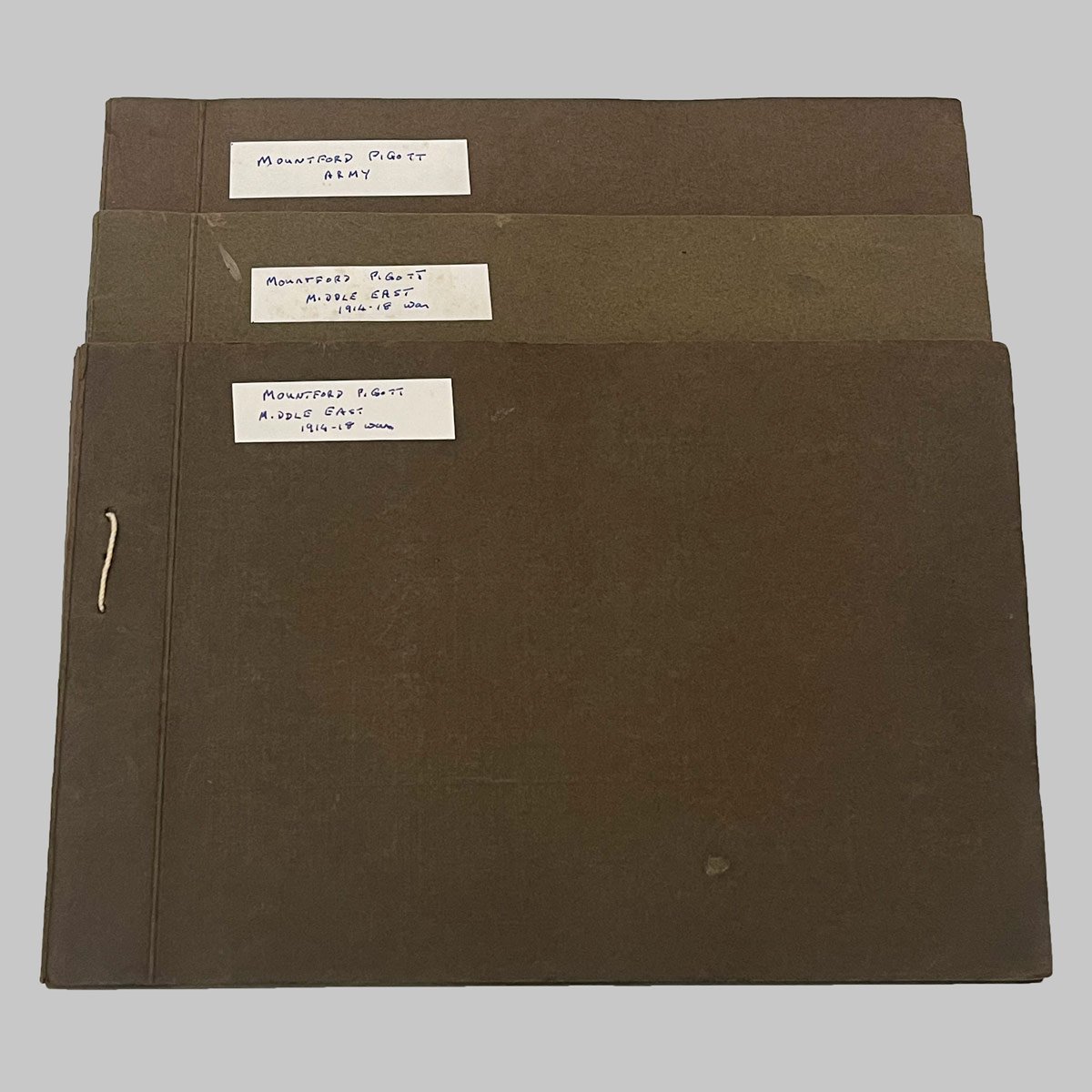 Image 15 of 15
Image 15 of 15
















A collection of photographs of the Middle East compiled during WWI by Captain Richard Mountford Pigott.
A unique and insightful collection of 121 photographs and 1 loosely inserted postcard of the Middle East across two photograph albums, compiled by Captain Richard Mountford Pigott, during his WWI military service. The albums contain photographs of Jerusalem, Bethlehem, Nazareth, Beersheba, Damascus, Baalbeck, Ismailia, Cairo, Alexandria. The photographs depict military activity and interest, key moments from the conclusion of WWI on the Palestinian front such as General Allenby's procession into Jerusalem in 1917, the local landscapes, infrastructure, architecture, important local and cultural sites, and offer an insight into civilian life in the Middle East during WWI.
The third album contains 125 photographs from Captain Mountford Pigott’s military leave in 1916. The album features photographs of Rome, Florence, Siena, and Pisa. The Italian photographs focus on the landscape, architecture, tourist attractions, street scenes, and Mountford Pigott with other military personnel. There are also photographs from Captain Mountford Pigott’s 8 week stay at the Cottonera Hospital in Malta in 1916, where he was treated for dysentery. There are photographs of the nurses, hospital staff, the hospital and hospital grounds. There are also some photographs of the landscape, street scenes, and cultural sites of Malta.
Oblong folios (30*20.5cm), string-tied albums, brown card wrappers, two albums with handwritten labels “Mountford Pigott Middle East 1914-18 War” to the front covers, one album with handwritten label “Mountford Pigott Army” to front cover, the text “Pollock Donegall Place Belfast” stamped to the back cover of all three albums, photographs with neat handwritten captions.
The contents of the albums have been well looked after and carefully preserved, save one photograph torn in half; near fine. Externally, the albums are near fine.
Some of the subject areas covered in the two Middle East albums include: the landscape (Sea of Galilee, River Jordan, Dead Sea, olive fields in Damascus, the sea front at Alexandria); local and cultural sites (monuments of Baalbeck, Church of the Holy Nativity, various mosques); local street scenes (in Cairo, Beersheba, Jerusalem, Bethlehem, Damascus, Ismailia); local people engaging in their daily lives (in Cairo, Ismailia, Jerusalem, Nazareth, Damascus, a girl who is a member of the Bishari tribe, a boy using a horse and cart); local trades (a local extracting dates from a palm tree, a local working at a water well); military and political interest (Mountford Pigott’s military camp at Ismailia, dead and wounded Turkish soldiers, Turkish prisoners, General Allenby's procession into Jerusalem in 1917, scenes in Jerusalem following General Allenby’s proclamation after the defeat and expulsion of the Turkish forces from Jerusalem on 9th December 1917 by the Egyptian Expeditionary Force). The significant cultural diversity of the Middle East is well represented in the albums.
General Allenby declared in his proclamation in Jerusalem in 1917:
“The defeat inflicted upon the Turks by the troops under my command has resulted in the occupation of your City by my forces. I therefore here and now proclaim it to be under Martial Law….. every sacred building, monument, holy spot, shrine, traditional site, endowment, pious bequest or customary place of prayer, of whatsoever form of the three religions, will be maintained and protected according to the existing customs and beliefs of those to whose faiths they are sacred.” (Imperial War Museum.)
Richard Mountford Pigott was born in Wandsworth in 1888, the eldest of 7 children, to Richard Pigott and his wife Mary. Richard became an architect, following in the footsteps of his uncle, the famous Edwardian architect, Edward William Mountford (1855-1908). Edward William Mountford is notable for designing the Old Bailey in London and various town halls across the UK. During WWI, Richard served as a Captain in the Middle East. In 1919, he was demobilised from the military and set up his own architecture business called “Mountford Pigott” in partnership with Harold Franklyn Murrell, who had also served in WWI as a Lieutenant in the Royal Engineers. They started to be hired for significant projects in 1921. In 1964, Richard retired and his son Michael, along with two partners, continued to run the business. Richard died in 1975. The business he founded is still trading today. (Mountford Pigott website.)
Please contact us for shipping costs if ordering from outside the UK.
A unique and insightful collection of 121 photographs and 1 loosely inserted postcard of the Middle East across two photograph albums, compiled by Captain Richard Mountford Pigott, during his WWI military service. The albums contain photographs of Jerusalem, Bethlehem, Nazareth, Beersheba, Damascus, Baalbeck, Ismailia, Cairo, Alexandria. The photographs depict military activity and interest, key moments from the conclusion of WWI on the Palestinian front such as General Allenby's procession into Jerusalem in 1917, the local landscapes, infrastructure, architecture, important local and cultural sites, and offer an insight into civilian life in the Middle East during WWI.
The third album contains 125 photographs from Captain Mountford Pigott’s military leave in 1916. The album features photographs of Rome, Florence, Siena, and Pisa. The Italian photographs focus on the landscape, architecture, tourist attractions, street scenes, and Mountford Pigott with other military personnel. There are also photographs from Captain Mountford Pigott’s 8 week stay at the Cottonera Hospital in Malta in 1916, where he was treated for dysentery. There are photographs of the nurses, hospital staff, the hospital and hospital grounds. There are also some photographs of the landscape, street scenes, and cultural sites of Malta.
Oblong folios (30*20.5cm), string-tied albums, brown card wrappers, two albums with handwritten labels “Mountford Pigott Middle East 1914-18 War” to the front covers, one album with handwritten label “Mountford Pigott Army” to front cover, the text “Pollock Donegall Place Belfast” stamped to the back cover of all three albums, photographs with neat handwritten captions.
The contents of the albums have been well looked after and carefully preserved, save one photograph torn in half; near fine. Externally, the albums are near fine.
Some of the subject areas covered in the two Middle East albums include: the landscape (Sea of Galilee, River Jordan, Dead Sea, olive fields in Damascus, the sea front at Alexandria); local and cultural sites (monuments of Baalbeck, Church of the Holy Nativity, various mosques); local street scenes (in Cairo, Beersheba, Jerusalem, Bethlehem, Damascus, Ismailia); local people engaging in their daily lives (in Cairo, Ismailia, Jerusalem, Nazareth, Damascus, a girl who is a member of the Bishari tribe, a boy using a horse and cart); local trades (a local extracting dates from a palm tree, a local working at a water well); military and political interest (Mountford Pigott’s military camp at Ismailia, dead and wounded Turkish soldiers, Turkish prisoners, General Allenby's procession into Jerusalem in 1917, scenes in Jerusalem following General Allenby’s proclamation after the defeat and expulsion of the Turkish forces from Jerusalem on 9th December 1917 by the Egyptian Expeditionary Force). The significant cultural diversity of the Middle East is well represented in the albums.
General Allenby declared in his proclamation in Jerusalem in 1917:
“The defeat inflicted upon the Turks by the troops under my command has resulted in the occupation of your City by my forces. I therefore here and now proclaim it to be under Martial Law….. every sacred building, monument, holy spot, shrine, traditional site, endowment, pious bequest or customary place of prayer, of whatsoever form of the three religions, will be maintained and protected according to the existing customs and beliefs of those to whose faiths they are sacred.” (Imperial War Museum.)
Richard Mountford Pigott was born in Wandsworth in 1888, the eldest of 7 children, to Richard Pigott and his wife Mary. Richard became an architect, following in the footsteps of his uncle, the famous Edwardian architect, Edward William Mountford (1855-1908). Edward William Mountford is notable for designing the Old Bailey in London and various town halls across the UK. During WWI, Richard served as a Captain in the Middle East. In 1919, he was demobilised from the military and set up his own architecture business called “Mountford Pigott” in partnership with Harold Franklyn Murrell, who had also served in WWI as a Lieutenant in the Royal Engineers. They started to be hired for significant projects in 1921. In 1964, Richard retired and his son Michael, along with two partners, continued to run the business. Richard died in 1975. The business he founded is still trading today. (Mountford Pigott website.)
Please contact us for shipping costs if ordering from outside the UK.
